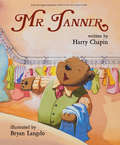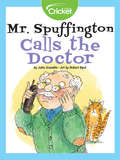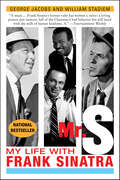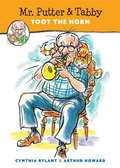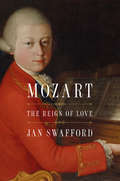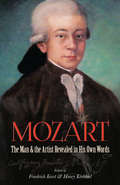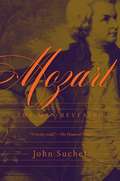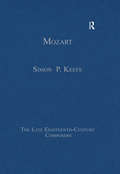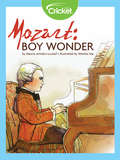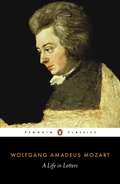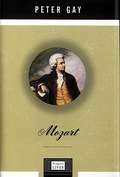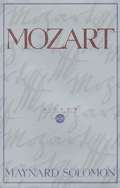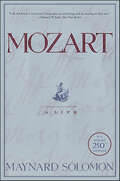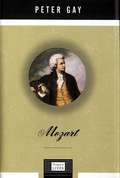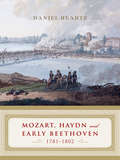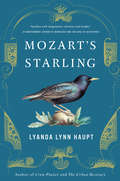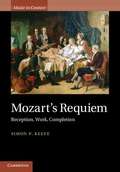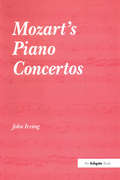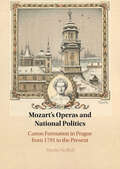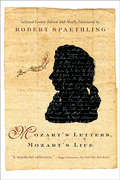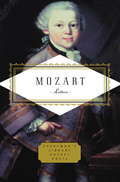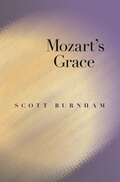- Table View
- List View
Mr. Tanner
by Harry ChapinMr. Tanner runs a dry cleaning shop in Dayton, Ohio, where he spends his days greeting his customers with his beautiful baritone voice. His friends and neighbors encourage him to sing professionally instead of cleaning clothes. He eventually takes a chance and travels to New York City to be heard by a concert agent and critics, only to find they weren't hearing what he was feeling. The song Mr. Tanner was released in 1973 off Harry Chapin's Short Stories album. The song was inspired by a mediocre review about a baritone singer in The New York Times. A portion of the proceeds from the sale of this book will go to help support WhyHunger, a charity championed by Harry Chapin himself.
Mr. Spuffington Calls the Doctor
by John GranditsIn this funny story, Mr. Spuffington cuts his finger, bumps his head, and falls asleep in the sun with his cat, Pablo. With each injury, he fears the worst and is quick to call Dr. John. Kids will enjoy learning about how the human body responds to injuries and begins to heal itself.
Mr. S: My Life with Frank Sinatra
by William Stadiem George Jacobs"Mr. S: My Life with Frank Sinatra, by former valet-aide George Jacobs with an oh-so-able assist by William Stadiem, has at least five quotable and shocking remarks about the famous on every page. The fifteen years Jacobs toiled for Frank produces a classic of its genre -- a gold-star gossip-lover's dream.... "The rest is showbiz history as it was, and only Ava Gardner, Humphrey Bogart, and Betty Bacall are spared. Marilyn Monroe, Judy Garland, Juliet Prowse, Noel Coward, Cole Porter, Mia Farrow, Elvis Presley, Swifty Lazar, Dean Martin, Peggy Lee, Sammy Davis Jr., Marlene Dietrich, Greta Garbo, Jimmy van Heusen, Edie Goetz, Peter Lawford, and all of the Kennedys come in for heaping portions of 'deep dish,' served hot. Sordid, trashy, funny, and so rat-a-tat with its smart inside info and hip instant analysis that some of it seems too good to be true....
Mr. Putter And Tabby Toot The Horn (Mr. Putter And Tabby)
by Cynthia Rylant Arthur HowardMr. Putter and his fine cat, Tabby, like sharing music with their neighbors Mrs. Teaberry and her good dog, Zeke. But when Mrs. Teaberry decides they should join a band, Mr. Putter isn’t so sure. He doesn’t even play an instrument--in fact, neither does Mrs. Teaberry. But they aren’t going to let that stop them!
Mozart’s Music of Friends
by Klorman, Edward and McCreless, Patrick Edward Klorman Patrick MccrelessIn 1829 Goethe famously described the string quartet as 'a conversation among four intelligent people'. Inspired by this metaphor, Edward Klorman's study draws on a wide variety of documentary and iconographic sources to explore Mozart's chamber works as 'the music of friends'. Illuminating the meanings and historical foundations of comparisons between chamber music and social interplay, Klorman infuses the analysis of sonata form and phrase rhythm with a performer's sensibility. He develops a new analytical method called multiple agency that interprets the various players within an ensemble as participants in stylized social intercourse - characters capable of surprising, seducing, outwitting, and even deceiving one another musically. This book is accompanied by online resources that include original recordings performed by the author and other musicians, as well as video analyses that invite the reader to experience the interplay in time, as if from within the ensemble.
Mozart: The Reign of Love
by Jan SwaffordFrom the acclaimed composer and biographer Jan Swafford comes the definitive biography of one of the most lauded musical geniuses in history, Wolfgang Amadeus Mozart.At the earliest ages it was apparent that Wolfgang Mozart’s singular imagination was at work in every direction. He hated to be bored and hated to be idle, and through his life he responded to these threats with a repertoire of antidotes mental and physical. Whether in his rabidly obscene mode or not, Mozart was always hilarious. He went at every piece of his life, and perhaps most notably his social life, with tremendous gusto. His circle of friends and patrons was wide, encompassing anyone who appealed to his boundless appetites for music and all things pleasurable and fun.Mozart was known to be an inexplicable force of nature who could rise from a luminous improvisation at the keyboard to a leap over the furniture. He was forever drumming on things, tapping his feet, jabbering away, but who could grasp your hand and look at you with a profound, searching, and melancholy look in his blue eyes. Even in company there was often an air about Mozart of being not quite there. It was as if he lived onstage and off simultaneously, a character in life’s tragicomedy but also outside of it watching, studying, gathering material for the fabric of his art.Like Jan Swafford’s biographies Beethoven and Johannes Brahms, Mozart is the complete exhumation of a genius in his life and ours: a man who would enrich the world with his talent for centuries to come and who would immeasurably shape classical music. As Swafford reveals, it’s nearly impossible to understand classical music’s origins and indeed its evolutions, as well as the Baroque period, without studying the man himself.
Mozart: The Man and the Artist Revealed in His Own Words
by Friedrich Kerst Henry KrehbielMozart's adult life was an almost unbroken succession of artistic triumphs and personal disappointments. This collection of excerpts from his letters and from other writings offers a unique opportunity for firsthand insights into the great composer's life and personality.In his own words (as compiled by Friedrich Kerst and translated into English by Henry Edward Krehbiel), Mozart communicates his optimisms and anticipations, his recurrent hopes for a post with a fixed income and suitable prestige; his frequent discouragements when these hopes went unfulfilled and pecuniary difficulties ensued; his unhappiness at Salzburg and his maltreatment at the hands of Archbishop Hieronymus; and the circumstances of his love affair with Aloysia Weber and his subsequent marriage to her sister, Constanze. In all, the book contains 255 observations on such subjects as opera, musical pedagogics, love and friendship, religion and morals, composers and performers, the value of hard work, self-respect and honor, travel, and other matters. Extensive annotations provide background for each excerpt.
Mozart: The Man Revealed
by John SuchetThe illustrated life-story of the world’s most beloved composer, bringing vividly to life the man himself, his influences, achievements, and the glittering milieu of the Habsburg empire in eighteenth-century Europe. We think we know the story of Wolfgang Amadeus Mozart's life. Austrian-born to a tyrannical father who worked him fiercely; unhappily married to a spendthrift woman; a child-like character ill at ease amid the aristocratic splendor of the Viennese court; a musical genius who died young thus depriving the world of future glories. Yet only that last point is actually true. In this comprehensive biography, John Suchet examines the many myths and misunderstandings surrounding the world's best-loved composer. From his early days as a child prodigy performing for the imperial royal family in Vienna to the last months of his short life, driven to exhaustion by a punitive workload, one thing remained constant: his happy disposition. Through trials and tribulations, grand successes and disheartening setbacks, Suchet shows us the real Mozart—blessed with an abundance of talent yet sometimes struggling to earn a living. His mischievous nature and earthy sense of humor, his ease and confidence in his own incredible abilities; these were traits that never left him. His music has brought comfort to countless generations; his life, though brief, is no less fascinating.
Mozart: Reception, Work, Completion (The\late Eighteenth-century Composers Ser.)
by SimonP. KeefeThis volume of essays on Wolfgang Amadeus Mozart reflects scholarly advances made over the last thirty years. The studies are broad and focused, demonstrating a large number of viewpoints, methodologies and orientations and the material spans a wide range of subject areas, including biography, vocal music, instrumental music and performance. Written by leading researchers from Europe and North America, these previously published articles and book chapters are representative of both the most frequently discussed and debated issues in Mozart studies and the challenging, exciting nature of Mozart scholarship in general. The volume is essential reading for researchers, students and scholars of Mozart's music.
Mozart: Boy Wonder
by Marcia Amidon LustedWolfgang Amadeus Mozart had amazing talent at a very young age, forever changing the idea of what a child prodigy was.
Mozart: A Life In Letters
by Wolfgang Amadeus MozartA selection of Mozart's letters, translated into English, complete with notes, linking commentary and chronology.
Mozart: A Life (Grandes Figures, Grandes Signatures Ser.)
by Peter GayA biography of the greatest musical mind in Western history Mozart's unshakable hold on the public's consciousness can only be strengthened by historian and biographer Peter Gay's concise and deft look at the genius's life. Mozart traces the development of the man whose life was a whirlwind of achievement, and the composer who pushed every instrument to its limit and every genre of classical music into new realms. .
Mozart: A Life
by Maynard SolomonThis scholarly 1995 book is more than a biography. It is a psychological portrait of the whole Mozart family, including Leopold, Wolfgang and Marianne. You don't have to be a musician to get into this book. This very readable biography contains a few musical examples but more emphasizes text and facts. It includes a complete list of all of Mozart's works and an analysis of bibliographical resources including how attitudes about Mozart have changed over time. If your view of Mozart was shaped by the Peter Shaffer play and movie, Amadeus,this book may contain quite a few surprises. Was Mozart poisoned? Was he an eternal child?
Mozart: A Life
by Maynard SolomonOn the occasion of Mozart's two hundred and fiftieth birthday, read Maynard Solomon's Mozart: A Life, universally hailed as the Mozart biography of our time.
Mozart: A Life
by Peter GayMozart's short life (only 35 years) were astoundingly productive. This book tells the story of his life, and provides useful information about his major compositions and associations. There are more comprehensive biographies of Mozart, but this one is not a difficult book to read and will provide enough information to augment the experience of listening to his amazing music.
Mozart, Haydn and Early Beethoven: 1781-1802
by Daniel HeartzA vivid portrait of Mozart and Haydn's greatest achievements and young Beethoven's works under their influence. Completing the trilogy begun with Haydn, Mozart and the Viennese School, 1740-1780 and continued in Music in European Capitals: The Galant Style, 1720-1780, Daniel Heartz concludes his extensive chronicle of the Classical Era with this much-anticipated third volume. By the early years of the nineteenth century, "Haydn, Mozart and Beethoven" had become a catchphrase--a commonplace expression signifying musical excellence. Indeed, even in his early career, Beethoven was hailed as the only musician worthy to stand beside Haydn and Mozart. In this volume, Heartz winds up the careers of Haydn and Mozart (who during the 1780s produced their most famous and greatest works) and describes Beethoven's first decade in Vienna, during which he began composing by patterning his works on the two masters. The tumult and instability of the French Revolution serves as a vivid historical backdrop for the tale.
Mozart's Women: His Family, His Friends, His Music
by Jane Glover[From the dust jacket:] "Throughout his life, Mozart was inspired, fascinated, amused, aroused, hurt, disappointed and betrayed by women--and he was equally complex to them. But, first and last, Mozart loved and respected women. His mother, his sister, his wife, her sisters, and his female patrons, friends, lovers and fellow artists all figure prominently in his life. And his experience, observation and understanding of women reappear, spectacularly, in the characters he created. As one of our finest interpreters of Mozart's work, Jane Glover is perfectly placed to bring these remarkable women--both real and dramatized--vividly to life. We meet Mozart's mother, Maria Anna and his beloved and devoted sister, Nannerl, perhaps as talented as her brilliant brother but, owing to her sex, destined to languish at home while Wolfgang and their father entertained the drawing rooms of Europe. We meet, too, Mozart's "other family"--his in-laws, the Webers: Constanze, his wife, much maligned by history, and her sisters, Aloysia, Sophie and Josefa. Aloysia and Josefa were highly talented singers for whom Mozart wrote some of his most remarkable music. Aloysia was the first woman whom Mozart truly and passionately loved, and her eventual rejection of him nearly broke his heart. Constanze, though a less gifted singer, proved a steadfast and loving wife and--after Mozart's death--his extremely efficient widow, consolidating his reputation and ensuring that his most enduring legacy, his music, never be forgotten. Mozart's Women is their story. But it is also the story of the women in his operas, all of whom were--like his sister, his mother, his wife and his entire female acquaintance--restrained by the conventions and strictures of eighteenth-century society. Yet through his glorious writing, he identified and released the emotions of his characters. Constanze in Die Entführung aus dem servil; Ilia and Elettra in Idomeneo; Susanna and the Countess in le mozze di Figaro; Donnas Anna and Elvira in Don Giovanni; Fiordiligi, Dorabella and Despina in Così fan tutte; Pamina and the Queen of the Night in Die Zauberflöte: are all examined and celebrated. They hold up the mirror to their audiences and offer inestimable insight, together constituting yet further proof of Mozart's true genius and phenomenal understanding of human nature. Rich, evocative and compellingly readable, Mozart's Women illuminates the music and the man--but, above all, the women who inspired him."
Mozart's Starling
by Lyanda Lynn HauptOn May 27th, 1784, Wolfgang Amadeus Mozart met a flirtatious little starling in a Viennese shop who sang an improvised version of the theme from his Piano Concerto no. 17 in G major. Sensing a kindred spirit in the plucky young bird, Mozart bought him and took him home to be a family pet. For three years, the starling lived with Mozart, influencing his work and serving as his companion, distraction, consolation, and muse.Two centuries later, starlings are reviled by even the most compassionate conservationists. A nonnative, invasive species, they invade sensitive habitats, outcompete local birds for nest sites and food, and decimate crops. A seasoned birder and naturalist, Lyanda Lynn Haupt is well versed in the difficult and often strained relationships these birds have with other species and the environment. But after rescuing a baby starling of her own, Haupt found herself enchanted by the same intelligence and playful spirit that had so charmed her favorite composer.In Mozart's Starling, Haupt explores the unlikely and remarkable bond between one of history's most cherished composers and one of earth's most common birds. The intertwined stories of Mozart's beloved pet and Haupt's own starling provide an unexpected window into human-animal friendships, music, the secret world of starlings, and the nature of creative inspiration. A blend of natural history, biography, and memoir, Mozart's Starling is a tour de force that awakens a surprising new awareness of our place in the world.
Mozart's Requiem: Reception, Work, Completion (Music in Context)
by Simon P. KeefePresenting a fresh interpretation of Mozart's Requiem, Simon P. Keefe redresses a longstanding scholarly imbalance whereby narrow consideration of the text of this famously incomplete work has taken precedence over consideration of context in the widest sense. Keefe details the reception of the Requiem legend in general writings, fiction, theatre and film, as well as discussing criticism, scholarship and performance. Evaluation of Mozart's work on the Requiem turns attention to the autograph score, the document in which myths and musical realities collide. Franz Xaver Süssmayr's completion (1791-2) is also re-appraised and the ideological underpinnings of modern completions assessed. Overall, the book affirms that Mozart's Requiem, fascinating for interacting musical, biographical, circumstantial and psychological reasons, cannot be fully appreciated by studying only Mozart's activities. Broad-ranging hermeneutic approaches to the work, moreover, supersede traditionally limited discursive confines.
Mozart's Piano Concertos
by John IrvingMozart's piano concertos stand alongside his operas and symphonies as his most frequently performed and best loved music. They have attracted the attention of generations of musicologists who have explored their manifold meanings from a variety of viewpoints. In this study, John Irving brings together the various strands of scholarship surrounding Mozart's concertos including analytical approaches, aspects of performance practice and issues of compositional genesis based on investigation of manuscript and early printed editions. Treating the concertos collectively as a repertoire, rather than as individual works, the first section of the book tackles broad thematic issues such as the role of the piano concerto in Mozart's quasi-freelance life in late eighteenth-century Vienna, the origin of his concertos in earlier traditions of concerto writing; eighteenth-century theoretical frameworks for the understanding of movement forms, subsequent historical shifts in the perception of the concerto's form, listening strategies and performance practices. This is followed by a 'documentary register' which proceeds through all 23 original works, drawing together information on the source materials. Accounts of the concertos' compositional genesis, early performance history and reception are also included here, drawing extensively on the Mozart family correspondence and other contemporary reports. Drawing together and synthesizing this wealth of material, Irving provides an invaluable reference source for those already familiar with this repertoire.
Mozart's Operas and National Politics: Canon Formation in Prague from 1791 to the Present
by Martin NedbalAs both an in-depth study of Mozart criticism and performance practice in Prague, and a history of how eighteenth-century opera was appropriated by later political movements and social groups, this book explores the reception of Mozart's operas in Prague between 1791 and the present and reveals the profound influence of politics on the construction of the Western musical canon. Tracing the links between performances of Mozart's operas and strategies that Bohemian musicians, critics, directors, musicologists, and politicians used to construct modern Czech and German identities, Nedbal explores the history of the canonization process from the perspective of a city that has often been regarded as peripheral to mainstream Western music history. Individual chapters focus on Czech and German adaptations of Mozart's operas for Prague's theaters, operatic criticism published in Prague's Czech and German journals, the work of Bohemian historians interpreting Mozart, and endeavours of cultural activists to construct monuments in recognition of the composer.
Mozart's Letters, Mozart's Life
by Robert Spaethling"A wonderful collection that gives Mozart a voice as a son, husband, brother and friend." --New York Times Book Review "Mozart's honesty, his awareness of his own genius and his contempt for authority all shine out from these letters."--Sunday Times (London). " In Mozart's Letters, Mozart's Life, Robert Spaethling presents "Mozart in all the rawness of his driving energies" (Spectator), preserved in the "zany, often angry effervescence" of his writing (Observer). Where other translators have ignored Mozart's atrocious spelling and tempered his foul language, "Robert Spaethling's new translations are lively and racy, and do justice to Mozart's restlessly inventive mind" (Daily Mail). Carefully selected and meticulously annotated, this collection of letters "should be on the shelves of every music lover" (BBC Music Magazine).
Mozart's Letters
by Peter Washington Lady Wallace Michael Rose Wolfgang Amadeus MozartMozart's remarkable life was well and richly documented in letters: his own and those concerning him written by others. This volume brings together a fascinating selection, giving us a detailed portrait of the composer's life and times. Here are letters to and from Mozart's domineering father, Leopold, the earliest of which, addressed to a friend, describes the six-year-old Mozart's accomplishments. There is also a letter sent to the Royal Society in London from one of its members describing an astonishing encounter with the eight-year-old prodigy. Here are letters from the adolescent Mozart to his mother and sister; adoring, protective missives to his wife; and, from his later years, letter after letter to friends, family, former patrons, and fellow musicians begging for financial help.Mozart's correspondence is full of details that illuminate the quotidien aspects of his days, reveal the great joys and burdens of his musical genius, and provide us with a lively account of the musical politics in the courts and opera houses of eighteenth-century Europe. Finally, in a letter written by Mozart's sister-in-law, this splendid epistolary portrait of the great composer is completed with a deeply moving account of his last hours.
Mozart's Grace
by Scott BurnhamAspects of beauty in the music of MozartIt is a common article of faith that Mozart composed the most beautiful music we can know. But few of us ask why. Why does the beautiful in Mozart stand apart, as though untouched by human hands? At the same time, why does it inspire intimacy rather than distant admiration, love rather than awe? And how does Mozart's music create and sustain its buoyant and ever-renewable effects? In Mozart's Grace, Scott Burnham probes a treasury of passages from many different genres of Mozart's music, listening always for the qualities of Mozartean beauty: beauty held in suspension; beauty placed in motion; beauty as the uncanny threshold of another dimension, whether inwardly profound or outwardly transcendent; and beauty as a time-stopping, weightless suffusion that comes on like an act of grace.Throughout the book, Burnham engages musical issues such as sonority, texture, line, harmony, dissonance, and timing, and aspects of large-scale form such as thematic returns, retransitions, and endings. Vividly describing a range of musical effects, Burnham connects the ways and means of Mozart's music to other domains of human significance, including expression, intimation, interiority, innocence, melancholy, irony, and renewal. We follow Mozart from grace to grace, and discover what his music can teach us about beauty and its relation to the human spirit. The result is a newly inflected view of our perennial attraction to Mozart's music, presented in a way that will speak to musicians and music lovers alike.
